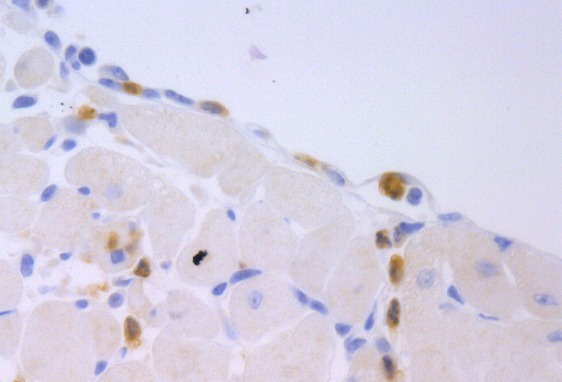Sterile inflammation develops in cardiovascular diseases or chronic kidney diseases where macrophages and other inflammatory cells accumulate to the tissues. While tissue inflammatory seems to be involved in the pathogenesis of heart and kidney diseases, it remains unclear how these inflammatory cells infiltrate to a heart, and what are the roles of these inflammatory cells in cardiovascular diseases.
Macrophages are currently classified into two subgroups, namely pro-inflammatory M1 macrophages and anti-inflammatory M2 macrophages. M1 macrophage secrets an inflammatory mediator, nitric oxide (NO), whereas M2 macrophages suppress NO production. We have studied the roles of oxygen environment in macrophage activation by focusing on transcription factors, hypoxia inductive factor (HIF)-1α and HIF-2α. We found HIF-1α is highly expressed in M1 macrophages, whereas HIF-2α is specifically expressed in M2 macrophages. We also found that the balance between HIF-1α and HIF-2α, namely HIF switching, determines the production of NO (Gene Dev 2010;24:491, PNAS 2013;110:17570).
HIF-1α signal also accelerates macrophage migration activity via glycolytic reprogramming (Nature Commun 2016;7:11635). Further, we identified that cardiac M1 macrophages prevent excessive tissue fibrosis by secreting a cytokine, oncostatin-M (Nature Commun 2019;10:2824). Currently, we are further investigating the roles of inflammatory signals in the tissue remodeling in a heart and a kidney.

RESEARCH
研究プロジェクト
Inflammation tissue remodeling